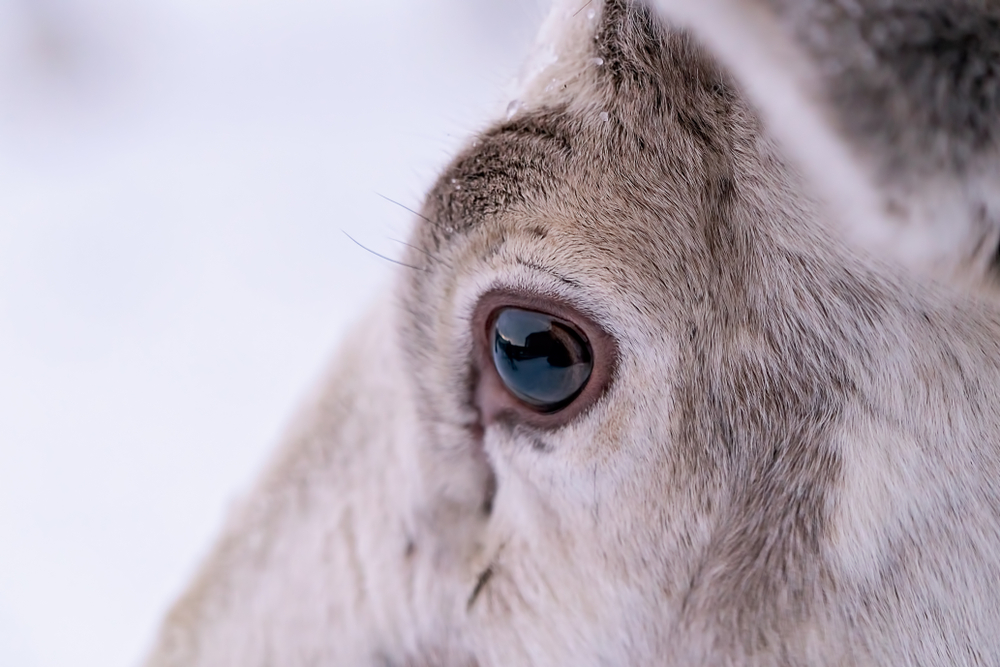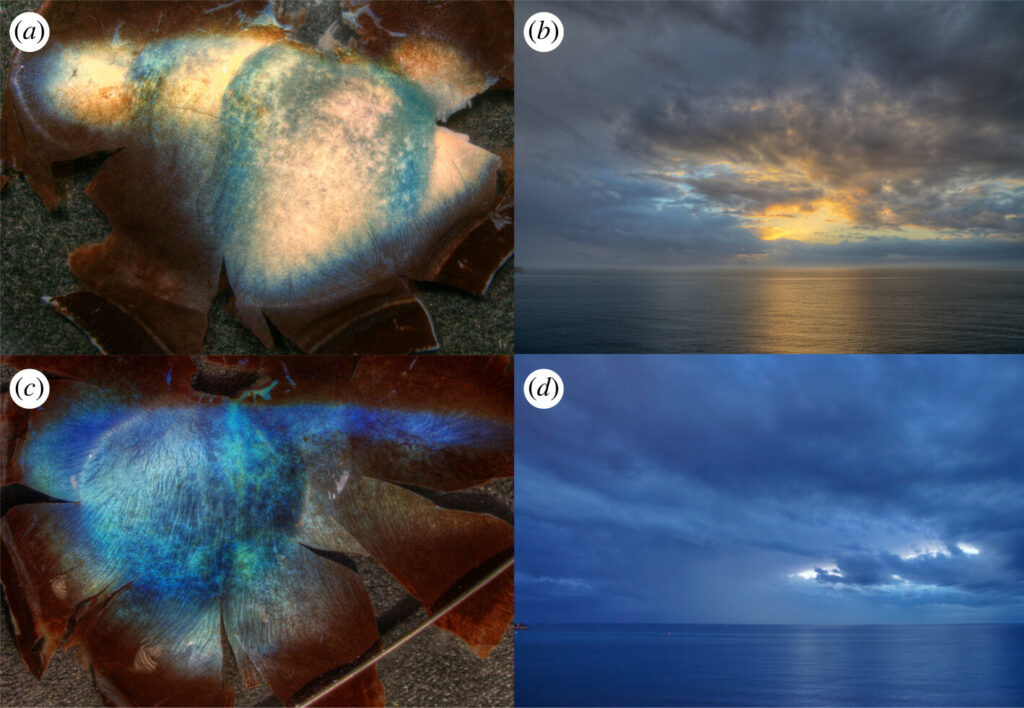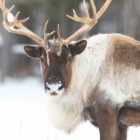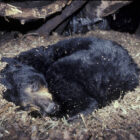Do reindeers have eyes that change colour depending on the season?

Reindeers are fascinating creatures that inhabit the Arctic and subarctic regions of the world. One intriguing aspect that has captured the curiosity of many is the idea that reindeer eyes may change color depending on the season.
Understanding Reindeer Eyes
Reindeer eyes, like those of many mammals, are marvels of evolutionary adaptation to their specific environmental challenges. These majestic creatures, scientifically known as Rangifer tarandus, have eyes that reflect their lifestyle in the Arctic and subarctic regions.
The structure of reindeer eyes shares commonalities with other mammals, but certain adaptations set them apart. The cornea and lens work together to focus light onto the retina, a layer of cells at the back of the eye responsible for converting light into electrical signals. However, what makes reindeer eyes particularly intriguing is the presence of the tapetum lucidum.
The tapetum lucidum is a thin layer of tissue situated behind the retina. This layer contains cells that act like mirrors, reflecting light that passes through the retina back into the eye.
This process enhances the amount of light available for photoreceptor cells, particularly rods, which are sensitive to low light levels. In essence, the tapetum lucidum serves as a biological adaptation designed to optimize vision in conditions where light is limited, a frequent occurrence in the Arctic environment.
Reindeers are crepuscular animals, meaning they are most active during dawn and dusk when light levels are low. The tapetum lucidum plays a crucial role in these low-light conditions by reflecting light back through the retina, allowing photoreceptor cells a second chance to detect and process it. This biological mechanism significantly enhances reindeers’ night vision, enabling them to navigate through the polar darkness and detect potential predators or food sources.
The Myth of Seasonal Eye Color Change
The misconception might stem from the unique properties of the tapetum lucidum, the reflective layer behind the retina in reindeer eyes. While this structure is indeed remarkable, allowing reindeers to navigate the dimly lit Arctic landscape with ease, it doesn’t inherently alter the color of their eyes. Instead, the tapetum lucidum enhances their vision by reflecting light that passes through the retina, a feature crucial for their survival in the prolonged periods of darkness during winter.
Scientific studies on reindeer ocular anatomy have consistently shown that the color of their eyes remains constant throughout the year. The pigmentation of the iris, responsible for determining eye color, is not influenced by seasonal changes. Any perceived alterations in eye color could be attributed to variations in lighting conditions, particularly the angle and intensity of sunlight, rather than an actual transformation within the eye itself.
Moreover, the concept of seasonal eye color change seems to overlook the basic principles of genetics governing eye pigmentation in mammals. The genetic code dictating the color of an animal’s eyes is generally stable and not subject to modification based on external factors such as temperature or light exposure. Reindeers, like many mammals, inherit their eye color from their parents, and this trait remains consistent throughout their lives.

Adaptations for Arctic Survival
At latitudes around 70 degrees north, such as near Tromsø in Norway or Utqiagvik, Alaska, a fascinating natural phenomenon occurs during winter. For over 60 consecutive days, the sun remains below the horizon, casting these regions into an extended period of twilight that envelops reindeer in an enduring 12 to 24 hours of subdued light.
The winter twilight experienced in these extreme latitudes is remarkable, being thousands times fainter than the vibrant daylight of summer. The unique quality of this twilight is further accentuated by its rich blue hue.
This celestial display is a result of the sun’s rays, situated below the horizon, traversing an extended path through the atmosphere. During this journey, the rays encounter an abundance of ozone, absorbing the orange and red light and leaving only the blue spectrum, which gracefully descends to Earth, painting the surroundings in shades of ultramarine.
Reindeer possess remarkable adaptations to navigate this prolonged twilight. Their tapeta, intricate structures composed of collagen fibers suspended in fluid, act as changeable reflective crystals. In the summer, the collagen fibers in the reindeers’ eyes float loosely in the fluid, creating a crystalline mirror that predominantly reflects reddish light. However, in the winter, the collagen fibers are densely packed, altering the crystal’s shape and causing it to reflect primarily blue light, with a subtle extension into the nearby ultraviolet spectrum.
In response to the darkness, it is likely that reindeer dilate their pupils, a physiological adjustment that, in turn, obstructs a small drainage hole for eye fluid. This obstruction leads to an increase in the eye’s internal pressure, compressing the tapetum collagen and inducing a transformation in the crystals’ shape. As summer returns, the reindeer’s pupils revert to their normal state, completing this intricate dance of adaptation to the changing seasons in these extreme latitudes.
Cultural Significance and Folklore
In indigenous cultures, reindeers often hold a sacred and revered status, deeply intertwined with the daily lives, spirituality, and survival of these communities. It is within this cultural context that myths and legends surrounding reindeer eyes changing color find their roots.
In folklore, the eyes are often considered windows to the soul, and reindeers are no exception. The reflective quality of their eyes, attributed to the tapetum lucidum, is seen as a mystical feature. Some indigenous communities believe that the eyes of a reindeer can reveal insights into its spiritual essence or even convey messages from the natural world. The notion that the eyes might change color with the seasons could be a poetic interpretation of the shifts in the spiritual energy associated with each time of the year.
In certain Arctic folklore, reindeers are considered guardians of the seasons. Each season brings with it a distinct set of challenges and blessings, and it is believed that the reindeers, with their keen senses and reflective eyes, have a unique connection to the cyclical rhythm of nature. The idea that their eyes change color with the seasons may symbolize the reindeers’ role as custodians of the ever-shifting Arctic environment.











Good post. I leɑrn something neᴡ and challenging on weƅsites I stumbleᥙpon οn a dailʏ basis.
It will always be exciting to read content from other authors and use a littlе something from their web sites.